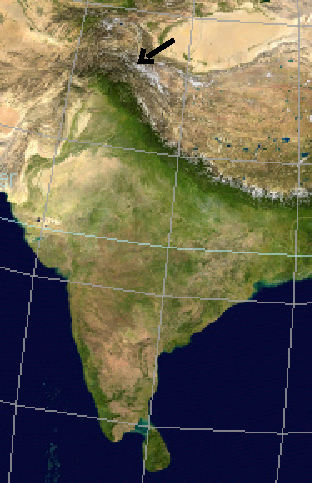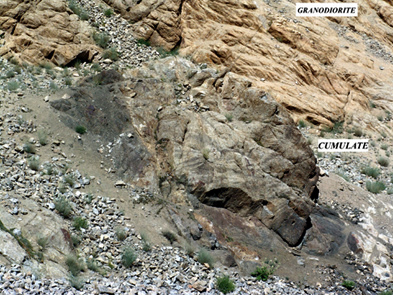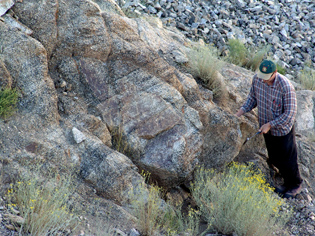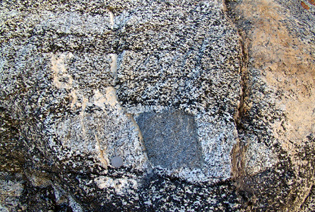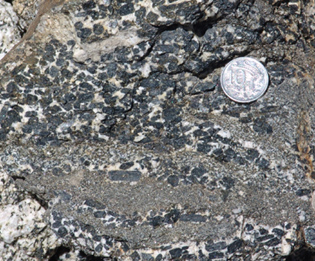|
Cumulates
are common in granitic bodies. The question of how crystals accumulate
in such viscous melts is currently being discussed. This page
illustrates a 40x30 m cumulate area within the granodiorite band of the
Leh Pluton of the Ladakh Batholith (Weinberg and Dunlap, 2000, J. Geol.
108, 303-320). The upper contact of the Leh Pluton strikes N70W dipping
70o
N and is comprised of granite, almost free of mafic.
Southwards, mosl likely downwards into the pluton, enclaves become more
common into a granodiorite band and even more common within the diorite
in the deepest exposed portion. This cumulate zone within the
granodiorite has numerous layers, and these are folded magmatically,
possibly as a result of relative movement between the cumulate zone and
the surrounding layer.CLICK ON ANY PHOTO FOR HIGH RESOLUTION VERSION |
Cumulates
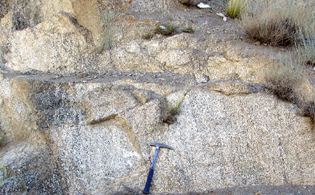 Cumulate bands. Looking west. |
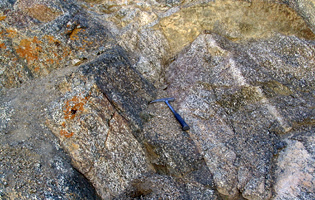 Cumulate bands. Looking west. |
Base of the eastern cumulate area
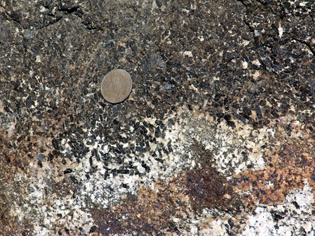
Irregular lower contact between hornblendite at the base of eastern region and the surrounding granodiorite |
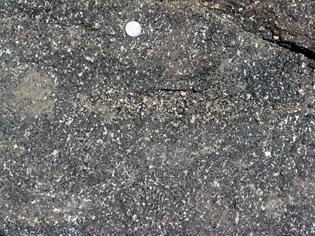 Hornblendite at the base of the eastern region |
Layering within cumulate
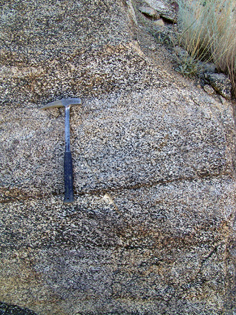
|
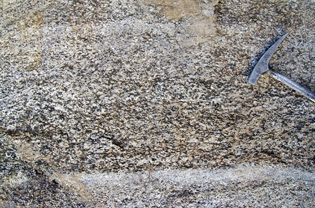 |
Sharp/gradual boundaries between cumulate layers and magmatic shear zone
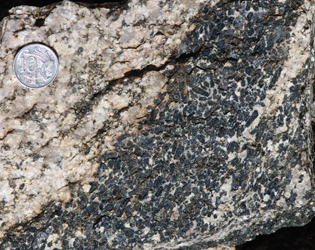
Sharp mafic and felsic bands in block |
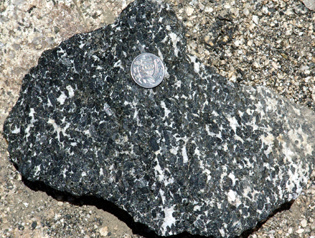 Gradual decrease in mafic grains to the right |
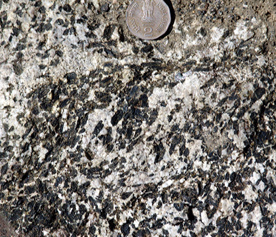 Magmatic shear band: a possible interstitial melt escape path |
Mafic Enclaves
